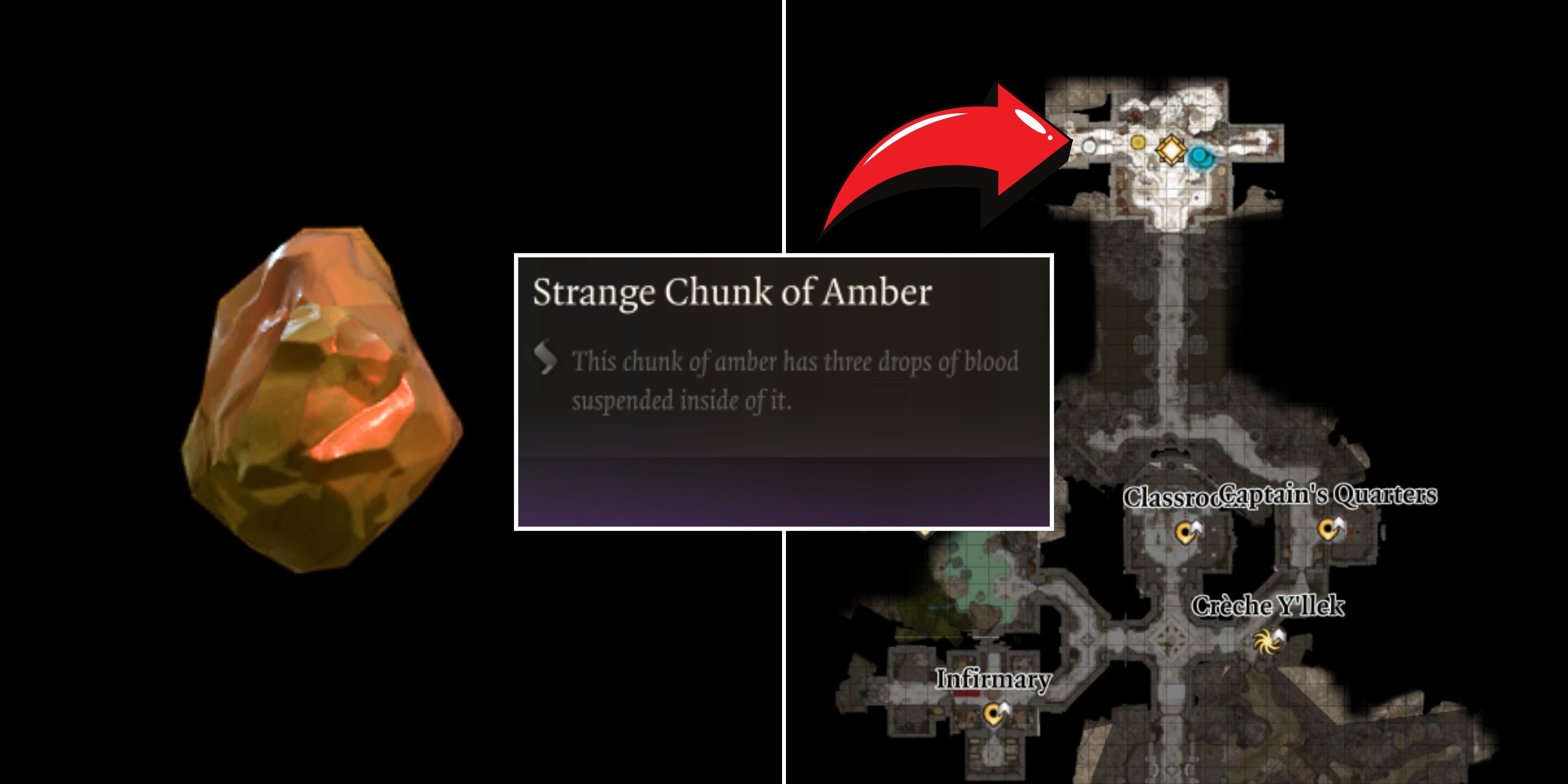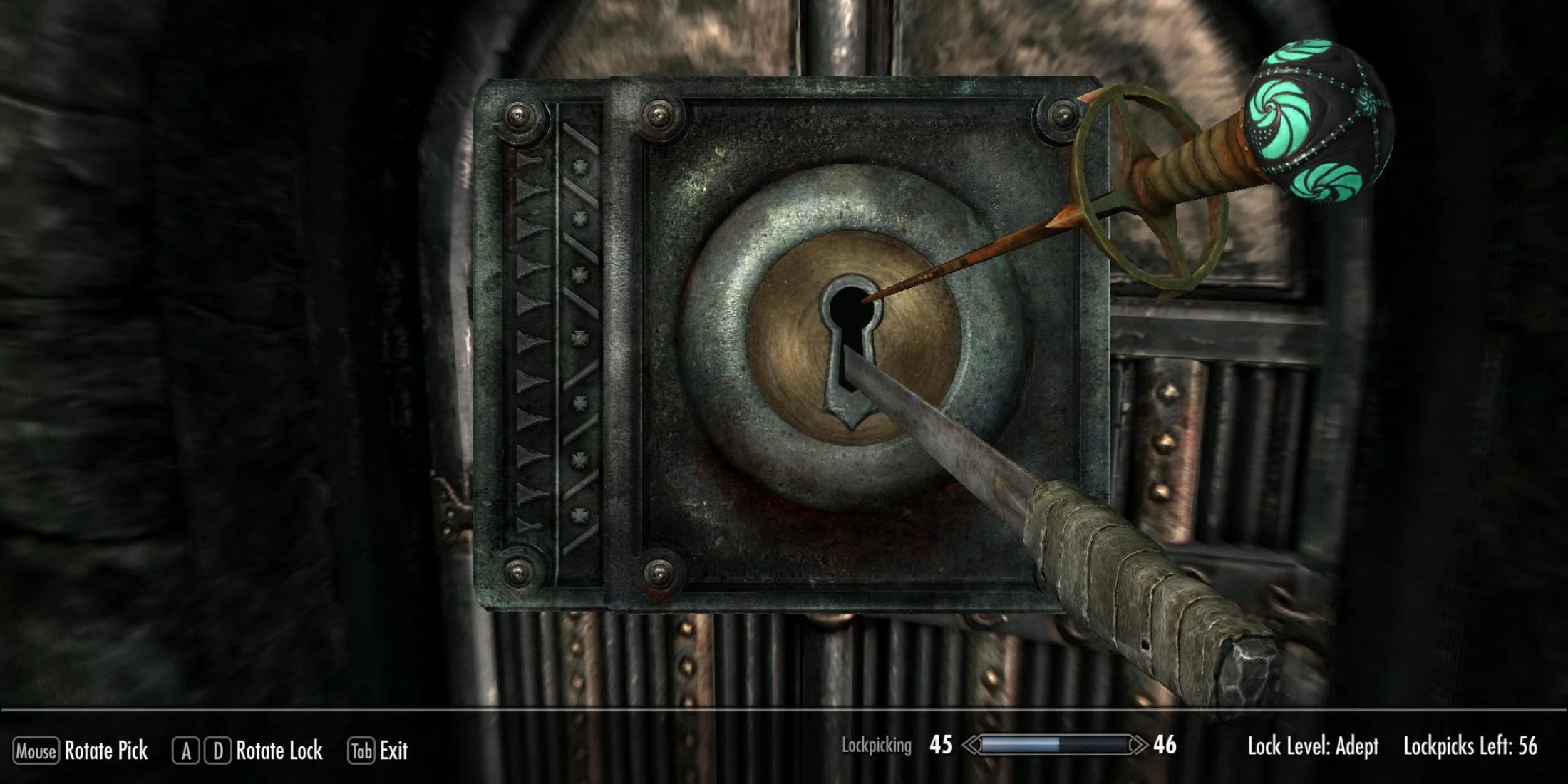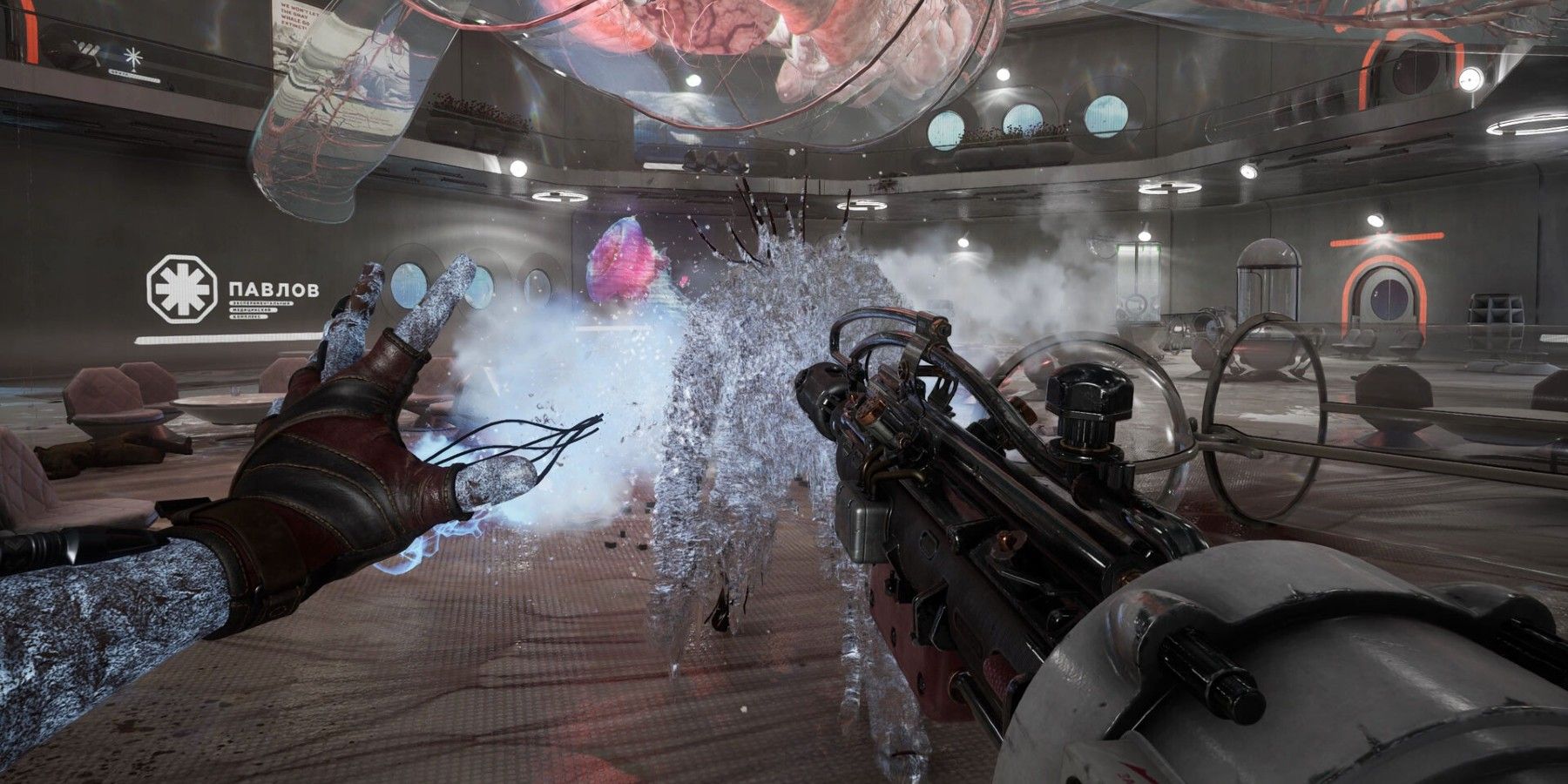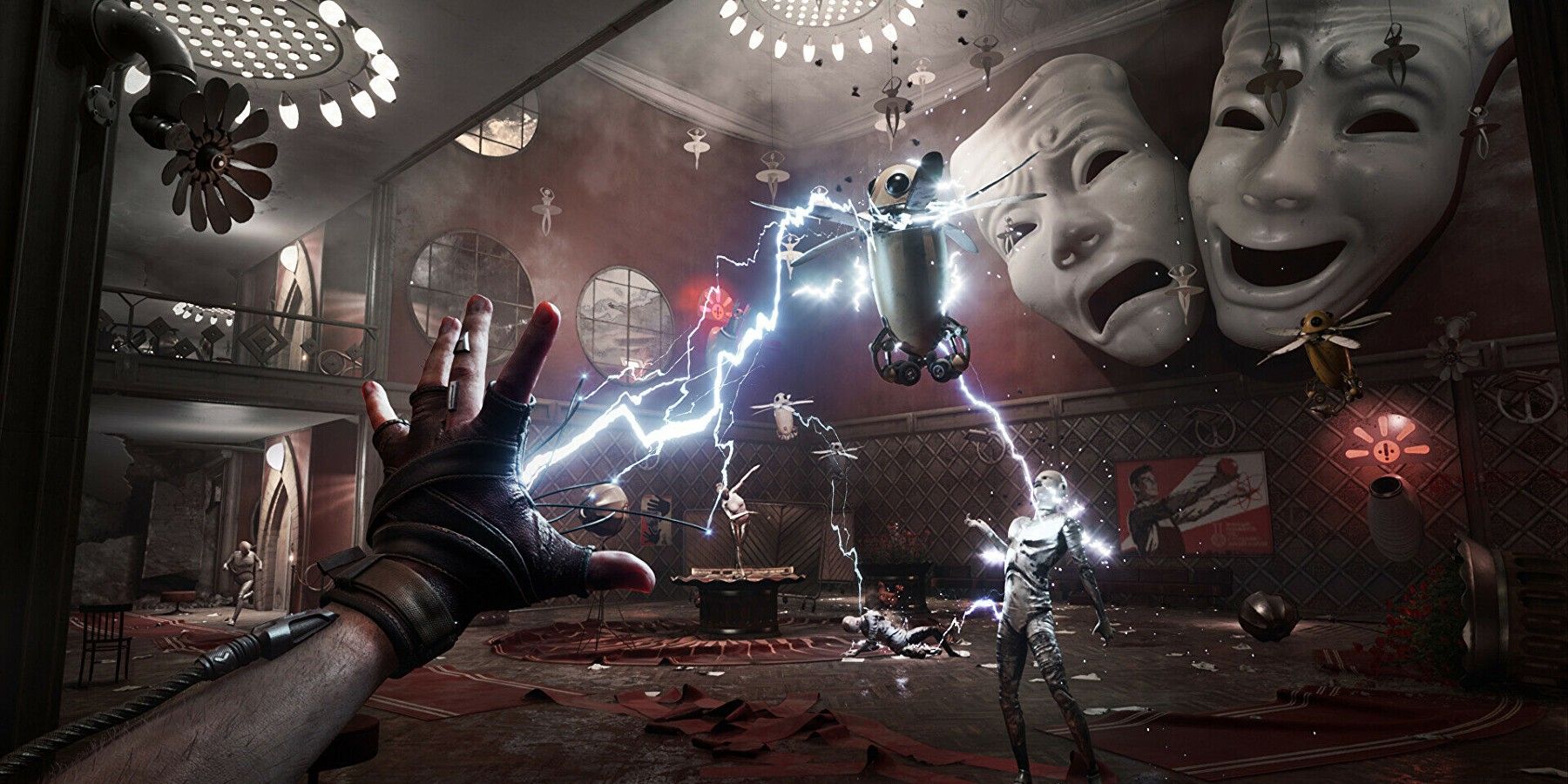Prior to the release of sci-fi action FPS Atomic Heart, its supernatural glove abilities stood out as similar to BioShock’s plasmids. Now that players have had the chance to get through Atomic Heart, the limitations on its BioShock-inspired abilities are abundantly clear. Lacking the complexity and variety of plasmids, Atomic Heart’s glove abilities merely scratch the surface of what could have been a deep and engaging system.
BioShock raised the bar for story-driven shooters at the time of its release with a unique setting, thought-provoking story, and clever gameplay systems. Its plasmid abilities gave supernatural powers to the player, allowing them to use various elemental attacks in addition to hacking security bots, hypnotizing enemies, using telekinesis, and more. While the diversity of abilities in BioShock allowed encounters to play out in vastly different ways depending on what players chose to use, the few abilities in Atomic Heart aren’t nearly as functional.
Atomic Heart’s Abilities Lack the Functionality of BioShock’s Plasmids
Atomic Heart’s announcement trailer dropped in 2017, with the game’s unique setting and creative enemy designs garnered it a quick following. Upon release, the game’s setting and art design are some of its most praised features. However, fans and critics are mixed on Atomic Heart overall due to poor writing, unlikeable characters, and divisive open-world systems. Additionally, while its plasmid-like abilities are entertaining at first, Atomic Heart’s abilities do not offer the same flexibility as BioShock’s.
The abilities in Atomic Heart are made possible using a technologically-advanced glove. These powers are used in combat and for solving puzzles, but they seem to take a back seat to the sheer number of available weapons. There are only a handful of abilities with the power to shock, freeze, or levitate enemies, along with providing more damage over time or a shield. While these each offer their own skill trees, fans expecting the diversity of plasmids from BioShock will likely be disappointed.
BioShock gives players access to seven traditional weapons and 11 plasmids, each offering unique powers that interplay between enemies and the environment. For example, a player can use the Ignite plasmid to set enemies ablaze, melt the ice blocking a hidden path, or set fire to a pool of gasoline. Several plasmids provide this heightened level of functionality, but Atomic Heart’s environments don’t offer the same level of interaction by comparison, so most of its abilities simply aren’t as useful.
While there are only five active abilities in Atomic Heart that players can upgrade in addition to passive character perks, there are 12 melee and gun weapons that feature more depth. Players can scavenge for parts and dismantle items to craft new weapons, ammo, and consumables, while recipes for additional weapon upgrades can be obtained by completing dungeon-like Testing Grounds. Although weapons can be augmented with elemental effects, the focus of combat being on traditional weapons rather than distinct abilities means encounters tend to play out similarly.
Due to its limited combat options, Atomic Heart plays less like an immersive sim such as BioShock or Prey, and more like a traditional action-FPS such as the Metro or Wolfenstein games. This isn’t inherently bad, but Mundfish could have given players more freedom to approach scenarios the way they want with deeper abilities. Though it lacks the depth of the games it was inspired by, Atomic Heart is a day-one Xbox Game Pass release that curious BioShock fans might want to give a chance.
Atomic Heart is available now for PC, PS4, PS5, Xbox One, and Xbox Series X/S.





